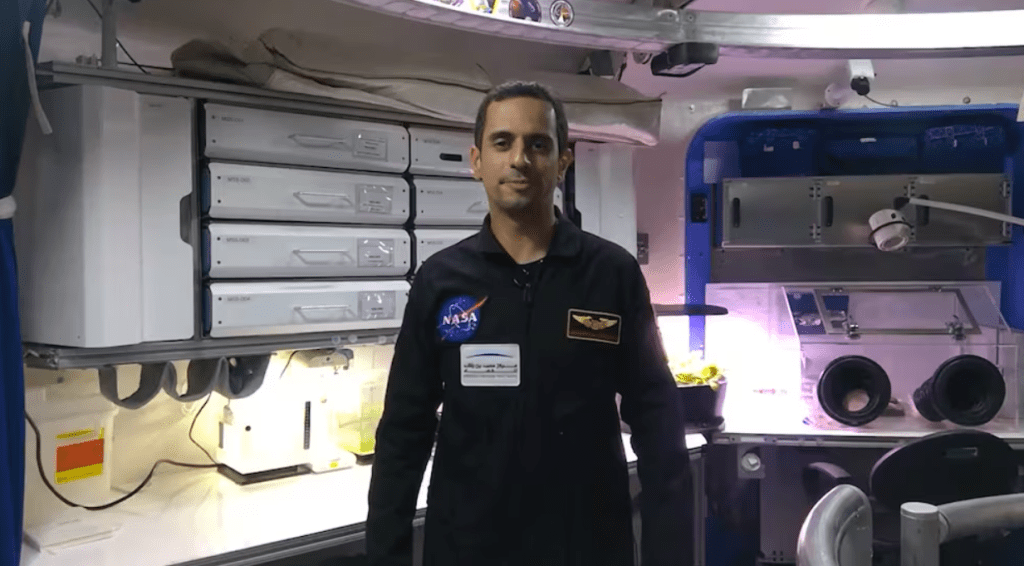What To Know
- Al Romaithi, who is only visible in the habitat which is located at the ISS through a window when he address the media, said that he awaits the end of the mission that will take place on the 24th of June.
- During the course of the mission, the crew had to solve tasks related to simulation of Martian surface exploration and overcome challenges as encountered within the “spacecraft” During the simulation conducted in a three-level habitat module, which resembled confined and isolative conditions that may be present in long term space exploration.
- “Just like you can imagine, when living in such a rather special environment in this country, as in this house, it’s only possible to miss a lot of things in life,” the astronaut said in a video posted by NASA’s Johnson Space Center.
Emirati pilot Shareef Al Romaithi who was among the 1000 lucky volunteers chosen worldwide is now poised to “come back to earth” after a Mars simulation exercise at NASA’s Hera in Houston, Texas lasting 45 days. This exercise was conducted by Captain Al Romaithi, a 39-year-old pilot with Etihad Airways who started the mission on May 10 accompanied by three American co-pilots.
During the course of the mission, the crew had to solve tasks related to simulation of Martian surface exploration and overcome challenges as encountered within the “spacecraft” During the simulation conducted in a three-level habitat module, which resembled confined and isolative conditions that may be present in long term space exploration.
Al Romaithi, who is only visible in the habitat which is located at the ISS through a window when he address the media, said that he awaits the end of the mission that will take place on the 24th of June. “Just like you can imagine, when living in such a rather special environment in this country, as in this house, it’s only possible to miss a lot of things in life,” the astronaut said in a video posted by NASA’s Johnson Space Center. He said that he has been miss his family, friends, food from home and flying most especially but he is greatly expecting to still continue with the scientific experiments.
It is the second analogue study mission related to the UAE and the space program; the first one was the mechanical engineer Saleh Al Ameri, who spent eight months in Russia in 2022. This initiative was launching 18 health experiments, six of which were created by the universities of the UAE including United Arab Emirates University and the American University of Sharjah and it is in this context that the following research questions have been developed, 드립니다. These experiments were designed to measure the human response in terms of physical, mental, and psychological changes in the crew during the confined space exposure.
The Hera facility measuring about 60. 39 sq m contained office space on the ground floor and contained a laboratory, a kitchen, an airlock and a private sleeping quarter, bathroom, and flight deck in the upper floor. Nonetheless, due to such limited living space, Al Romaithi was fortunate to use his pilots’ experiences to cope. He underlined the importance of the collaboration with your peers in the process of the project, as he wrote, “My colleagues have been a valuable source of information and assistance, as such, we make sure that these fascinating scientific projects are completed successfully. ”


